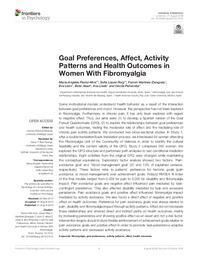Por favor, use este identificador para citar o enlazar este ítem:
https://hdl.handle.net/11000/30813Registro completo de metadatos
| Campo DC | Valor | Lengua/Idioma |
|---|---|---|
| dc.contributor.author | Pastor-Mira, María Ángeles | - |
| dc.contributor.author | López Roig, Sofía | - |
| dc.contributor.author | Martínez-Zaragoza, Fermín | - |
| dc.contributor.author | León-Zarceño, Eva | - |
| dc.contributor.author | Abad, Ester | - |
| dc.contributor.author | Lledó, Ana | - |
| dc.contributor.author | Peñacoba, Cecilia | - |
| dc.contributor.other | Departamentos de la UMH::Ciencias del Comportamiento y salud | es_ES |
| dc.date.accessioned | 2024-01-30T06:42:00Z | - |
| dc.date.available | 2024-01-30T06:42:00Z | - |
| dc.date.created | 2019-08-21 | - |
| dc.identifier.citation | Frontiers in Psychology, Sec. Psychology for Clinical Settings, Volume 10 - 2019 | es_ES |
| dc.identifier.issn | 1664-1078 | - |
| dc.identifier.uri | https://hdl.handle.net/11000/30813 | - |
| dc.description.abstract | Some motivational models understand health behavior as a result of the interaction between goal preferences and mood. However, this perspective has not been explored in fibromyalgia. Furthermore, in chronic pain, it has only been explored with regard to negative affect. Thus, our aims were: (1) to develop a Spanish version of the Goal Pursuit Questionnaire (GPQ); (2) to explore the relationships between goal preferences and health outcomes, testing the moderator role of affect and the mediating role of chronic pain activity patterns. We conducted two cross-sectional studies. In Study 1, after a double translation/back-translation process, we interviewed 94 women attending the Fibromyalgia Unit of the Community of Valencia in order to identify the cultural feasibility and the content validity of the GPQ. Study 2 comprised 260 women. We explored the GPQ structure and performed path analyses to test conditional mediation relationships. Eight activities from the original GPQ were changed while maintaining the conceptual equivalence. Exploratory factor analysis showed two factors: ‘Painavoidance goal’ and ‘Mood-management goal’ (37 and 13% of explained variance, respectively). These factors refer to patients’ preference for hedonic goals (pain avoidance or mood-management) over achievement goals. Robust RMSEA fit index of the final models ranged from 0.039 for pain to 0.000 for disability and fibromyalgia impact. Pain avoidance goals and negative affect influenced pain mediated by taskcontingent persistence. They also affected disability mediated by task and excessive persistence. Pain avoidance goals and positive affect influenced fibromyalgia impact mediated by activity avoidance. We also found a direct effect of negative and positive affect on health outcomes. Preference for pain avoidance goals was always related to pain, disability and fibromyalgia impact through activity patterns. Affect did not moderate these relationships and showed direct and indirect paths on health outcomes, mainly by increasing persistence and showing positive affect as an asset and not a risk factor. Intervention targets should include flexible reinforcement of achievement goals relative to pain avoidance goals and positive affect in order to promote task-persistence adaptive activity patterns and decreased activity avoidance. | es_ES |
| dc.format | application/pdf | es_ES |
| dc.format.extent | 15 | es_ES |
| dc.language.iso | eng | es_ES |
| dc.publisher | Frontiers Media | es_ES |
| dc.rights | info:eu-repo/semantics/openAccess | es_ES |
| dc.rights.uri | http://creativecommons.org/licenses/by-nc-nd/4.0/ | * |
| dc.subject | fibromyalgia | es_ES |
| dc.subject | goal preferences | es_ES |
| dc.subject | activity patterns | es_ES |
| dc.subject | affect | es_ES |
| dc.subject | health outcomes | es_ES |
| dc.subject.other | CDU::159.9 - Psicología | es_ES |
| dc.title | Goal Preferences, Affect, Activity Patterns and Health Outcomes in Women With Fibromyalgia | es_ES |
| dc.type | info:eu-repo/semantics/article | es_ES |
| dc.relation.publisherversion | https://doi.org/10.3389/fpsyg.2019.01912 | es_ES |

Ver/Abrir:
2º APORTACIÓN 2019.pdf
1,88 MB
Adobe PDF
Compartir:
 La licencia se describe como: Atribución-NonComercial-NoDerivada 4.0 Internacional.
La licencia se describe como: Atribución-NonComercial-NoDerivada 4.0 Internacional.
.png)